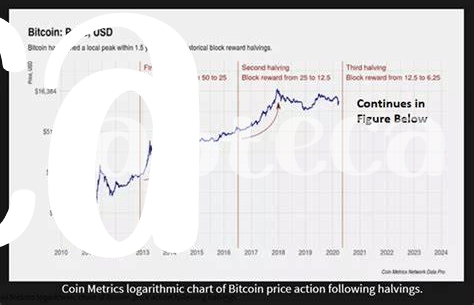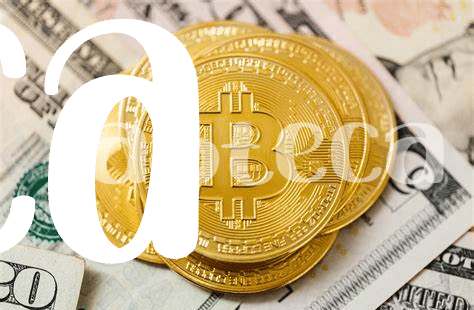🚀 the Sec’s Role in Bitcoin’s Big Picture

Imagine a big playground where everyone wants to play with digital coins, like Bitcoin. Now, in this playground, we have a guardian called the SEC, short for the U.S. Securities and Exchange Commission. Their job isn’t to spoil the fun but to make sure everyone plays nice and safe. They keep an eye on how these digital coins are traded and make sure no one is cheating or risking too much. In a way, they’re like referees in a game, ensuring everyone follows the rules for a fair play. As Bitcoin becomes more popular, the SEC’s role gets even more important. They work on creating rules that help protect everyone involved – from the people buying and selling to the whole economy. This is essential because as more people join this digital coin game, the more we all need to make sure it’s safe and fair for everyone.
| Year | Role of the SEC |
|---|---|
| 2024 | Ensuring Fair and Safe Trading of Bitcoin and Other Digital Coins |
🎣 Understanding 2024’s Crypto Regulatory Framework
As we sail into 2024, the waters of cryptocurrency regulation are becoming clearer, yet more complex. The SEC, which acts like a captain ensuring that everyone plays by the rules, is keenly focusing on cryptocurrencies like Bitcoin. It’s all about making sure that as Bitcoin grows, it does so in a way that’s safe for everyone involved. Think of it as setting up lighthouses and navigation buoys to guide the way. This year, the framework being laid out is not just about putting up “Do Not Enter” signs. It’s more about laying down paths that lead to treasure islands safely without running into pirates or getting lost in fog. With these new rules, there’s a bit of homework for everyone – from the big ship owners to the sailors on deck. Everyone needs to know the map, understand the signs, and follow the compass direction given by the SEC. But here’s the exciting part: while navigating these regulatory waters might seem daunting, it’s also leading to new discoveries. Innovations are blooming like never before, as developers and entrepreneurs find creative ways to sail within these guidelines. For those looking into the latest tech developments in the Bitcoin sphere, a great resource is at https://wikicrypto.news/navigating-privacy-focused-bitcoin-wallets-in-2024, shedding light on how technology and regulation are finding a harmonious balance. Balancing innovation with regulation is the golden key for Bitcoin’s journey from the fringes to mainstream acceptance, making 2024 a promising year for everyone aboard this magnificent voyage.
🛡️ Navigating through New Compliance Challenges

In 2024, stepping into the world of Bitcoin and crypto means more than just being tech-savvy. It’s like entering a new country, where you need to know the rules to stay out of trouble. The rules, in this case, are set by big players like the SEC (Securities and Exchange Commission) in the US. They’re making sure everything is fair play, but as Bitcoin becomes more popular, these rules are getting a fresh coat of paint. Think of it as a game where the rules are evolving. To play well, businesses and investors need to keep up, understanding what’s allowed and what’s not. It’s not just about following the old paths; it’s about recognizing the new signs and staying on the right side of the line.
Now, imagine you’re a captain navigating through foggy seas, that’s kind of what it’s like dealing with the new compliance challenges. There are lighthouses, like legal advice and regulatory updates, offering guidance, but the fog – the uncertainties and changes in laws – can be tricky. Staying informed and agile is key. As the landscape evolves, strategies to ensure one is compliant need to be as dynamic as the regulations themselves. Finding tools and allies in this journey can make navigating these waters less daunting, turning challenges into opportunities for growth. It’s about staying alert, ready to adjust the sails as the winds change.
🌉 Bitcoin’s Path: from Fringe to Mainstream

Once only a whisper among tech enthusiasts and digital libertarians, Bitcoin has begun a remarkable transition into the global spotlight. What started off in the curious corners of the internet is now center stage in financial discussions worldwide. It’s a journey from the outer edges of finance to becoming a topic at dinner tables and boardrooms alike. This leap wasn’t made overnight. It is the result of a growing understanding and acceptance of digital currencies. As more people learn about and invest in Bitcoin, its role in both personal finance and the broader economy continues to evolve. Through this journey, Bitcoin has started to shake off its ‘digital wild west’ reputation, drawing attention from not just potential investors but also regulators keen on understanding and framing its place in the market.
In trying to understand what impacts bitcoin value market trends in 2024, it becomes clear that the intersection between innovation and regulation is where the future of Bitcoin will be decided. Regulatory bodies, while initially wary, are beginning to see the potential benefits that come with digital currencies – from increased transaction speed and lower costs to enhanced security. However, this shift towards the mainstream is not without its hurdles. Challenges such as achieving regulatory compliance, ensuring consumer protection, and integrating with existing financial systems loom large. Yet, these very challenges could also pave the way for innovations that make Bitcoin an even more attractive and sustainable option in the future, ensuring its place in the mainstream financial landscape is not just a temporary visit but a long-term stay.
💡 Innovations Vs. Regulations: Finding the Balance
Imagine a world where new tech marvels in the digital money space pop up every day, pushing the boundaries of what we thought possible. Now, try to fit these innovations into the existing rules of the road – a task not for the faint-hearted. On one side, we’ve got brilliant minds concocting exciting ways to use Bitcoin, making it faster, safer, and more accessible to folks everywhere. On the other, there are the rule-makers, tasked with ensuring that this digital gold rush doesn’t lead to Wild West chaos. They’re drawing lines in the sand, making sure everyone plays fair and stays safe. The trick lies in walking this tightrope without tipping too far on either side. Too much leeway, and we risk the chaos of unchecked innovation; too strict, and we stifle the very creativity that makes the crypto world sparkle. It’s a bit like trying to fly a kite – with just enough string, it soars high, but hold it too tight or too loose, and down it comes. Finding this balance is crucial for Bitcoin’s journey ahead, promising a future where innovation and regulation dance in harmony, each step calculated to keep the ecosystem thriving and secure.
Here’s a quick glance at how these elements interact:
| Innovation | Impact | Regulatory Response |
|---|---|---|
| New Payment Systems | Makes transactions faster and cheaper | Establish guidelines to prevent fraud |
| Enhanced Security Features | Increases trust in Bitcoin transactions | Update compliance standards to incorporate new technologies |
| Expansion into New Markets | Broadens access to Bitcoin, diversifying its use | Adjust regulations to protect consumers across borders |
🔄 Impact of Global Trends on U.s. Regulations

In 2024, the ocean of global trends is making waves that reach the shores of the U.S., influencing how regulations around Bitcoin and other cryptocurrencies are shaped. As countries around the world chart their own courses through the choppy waters of crypto regulation, the U.S. Securities and Exchange Commission (SEC) finds itself navigating a complex global map. Innovations in blockchain technology and shifts in international financial policies act like the wind and tides, guiding the SEC’s regulatory sail. For instance, if a major economy decides to embrace Bitcoin as a legal tender, this could encourage more open-minded approaches in the U.S. Conversely, stringent regulations abroad might prompt the SEC to tighten its grip, ensuring the safety of American investors. Meanwhile, the ever-evolving nature of Bitcoin itself, with developments that aim to make transactions faster, cheaper, and more private, challenges regulators to keep up without stifling innovation. For anyone invested in the crypto space, understanding these global influences is crucial. Why do Bitcoin prices fluctuate? Market trends in 2024 can help demystify some of the external factors impacting your digital wallet, whether you’re a seasoned trader or just starting.
